UH Maui training program leads state with 22% wage boost for graduates

A recent study by the University of Hawaiʻi Economic Research Organization has highlighted the success of the Good Jobs Hawaiʻi program, with participants from the UH Maui College campus seeing the largest wage gains of any campus statewide.
The UHERO report posted July 7 by Rachel Inafuku and Tim Halliday found that graduates from the tuition-free training program at UH Maui College saw a 22% increase in their earnings after completing their certificates, the highest jump among all participating campuses. Students who took the same courses at O‘ahu, Kaua‘i, and Hawai‘i Island campuses came away with wage increases of 15 to 16%.
UH Maui Chancellor Lui Hokoana credited Nicolette Van Der Lee, who leads the Good Jobs program on Maui, and the college’s healthcare partnerships with the success of the program for Maui students.
While Maui students saw a greater percentage increase in wages, O‘ahu program graduates still took home more wages overall, just not a higher percentage increase.
“Prior to the program, average quarterly earnings for O‘ahu campus participants were about $2,000 higher than those on the Neighbor Islands,” the blog post says. “After completion, however, average earnings for Maui campus completers approached those of their O‘ahu peers. Because the majority of students took courses through the campus in their county of residence — even when courses were delivered online — these figures likely reflect genuine geographic differences in wage outcomes among participants.”
Statewide, program completers saw an average increase of $1,800 in real quarterly wages two quarters after completing their training. (That’s approximately $7,200 per year.) The UHERO analysis showed this was a significantly larger gain than for comparable individuals who did not complete the program.
According to the study, a key factor in these wage boosts is the program’s effectiveness in helping participants transition from their previous jobs into new, higher-paying careers. The report notes that participants who switched to new industries like healthcare and skilled trades saw the most substantial earnings growth.
“Among healthcare students, completers earned 19% more than non-completers two quarters after completion, increasing to 23% by the fourth quarter,” the blog says. “In the skilled trades and clean energy sectors, the wage gap was even wider, with completers earning 35% more. However, these widening wage gaps between completers and non-completers may reflect pre-existing differences — such as motivation, background characteristics, or access to employment opportunities — rather than the direct effects of the program.”
The Good Jobs Hawaii program is a free, non-credit training program offered through University of Hawai‘i Community Colleges. It’s aimed at addressing Hawaii’s workforce challenge of having a high cost of living while there’s mostly low-wage, low-skilled jobs. The program makes available a way to gain skills and credentials in high-demand fields such as healthcare and skilled trades, especially those with higher wages and more career opportunities.According to the blog, the UH economists’ study conducted in collaboration with Ben Castleman of the University of Virginia, is the first analysis to link non-credit student records from UH community colleges with data from the Data eXchange Partnership (DXP).









